| Date | Text | |
|---|---|---|
30 Nov 1918

International Astronomical Union |
International Astronomical Union (astronomy) The International Astronomical Union is established in Paris. |
|
30 Nov 1918
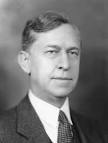
Leonard Eugene Dickson |
Leonard Eugene Dickson (history of science) Leonard Eugene Dickson begins publication of History of the Theory of Numbers. |
|
30 Nov 1918

George Newman |
George Newman (medicine) Dr George Newman is appointed as the first Chief Medical Officer to the Ministry of Health in England and Wales. |
|
30 Nov 1918

Arnold Sommerfeld |
Arnold Sommerfeld (physics) Arnold Sommerfeld and Walther Kossel publish their displacement law. |
|
30 Nov 1918

James Jeans |
James Jeans (physics) James Jeans discovers that the dynamical constants of motion determine the distribution function for a system of particles. |
|
30 Nov 1918

Berlin |
Berlin (psychology) In Berlin Dr Magnus Hirschfeld and Arthur Kronfeld found the Institut für Sexualwissenschaft. |
|
30 Nov 1918

Lee De Forest |
Lee De Forest (technology) Lee De Forest files his first United States patent for the Phonofilm sound-on-film process. |
|
30 Nov 1918

United States |
United States (technology) United States firearms designer John Browning finalizes the design of the M1919 Browning machine gun. |
|
30 Nov 1918

John T. Thompson |
John T. Thompson (technology) United States firearms designer John T. Thompson finalizes the design of the Thompson submachine gun. |
|
23 Jan 1919

Hans Hass |
birth Hans Hass Hans Hass (died 2013), Austrian zoologist and oceanographer. |
|
19 Feb 1919

Frederick DuCane Godman |
death Frederick DuCane Godman Frederick DuCane Godman (born 1834), lepidopterist, entomologist and ornithologist. |
|
04 Apr 1919
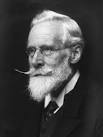
William Crookes |
death William Crookes Sir William Crookes (born 1832), chemist and physicist. |
|
09 Apr 1919

J. Presper Eckert Jr. |
birth J. Presper Eckert Jr. Born 9 Apr 1919; died 3 Jun 1995 at age 76. American engineer and inventor of the first general-purpose electronic computer, a digital machine that was the prototype for most computers in use today. In 1946, Eckert with John W. Mauchly fulfilled a government contract to build a digital computer to be used by the U.S. Army for military calculations. They named it ENIAC for Electronic Numerical Integrator and Computer. By 1949, they had started a manufacturing company for their BINAC computer. This was followed by a business oriented computer, UNIVAC (1951), which was put to many uses and spurred the growth of the computer industry. By 1966 Eckert held 85 patents, mostly for electronic inventions. |
|
17 Apr 1919

Bernhard Sigmund Schultze |
death Bernhard Sigmund Schultze Bernhard Sigmund Schultze (born 1827), obstetrician. |
|
29 May 1919
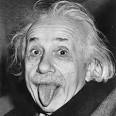
Einstein's relativity theory proved |
Einstein's relativity theory proved In 1919, a solar eclipse permitted observation of the bending of starlight passing through the sun's gravitational field, as predicted by Albert Einstein's theory of relativity. Separate expeditions of the Royal Astronomical Society travelled to Brazil and off the west coast of Africa. Both made measurements of the position of stars visible close to the sun during a solar eclipse. These observations showed that, indeed, the light of stars was bent as it passed through the gravitational field of the sun. This was a key prediction of Albert Einstein's theory that gravity affected energy as in addition to the familiar effect on matter. The verification of predictions of Einstein's theory, proved during the solar eclipse was a dramatic landmark scientific event. |
|
29 May 1919
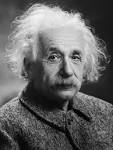
Einstein's |
Einstein's (physics) Einstein's theory of general relativity is tested by Arthur Eddington's observation of the "bending of light" during the total solar eclipse on this day observed in Principe, and by Andrew Crommelin in Sobral, Ceará, Brazil (confirmed November 19). |
|
01 Jun 1919

chemical bonding models |
chemical bonding models (chemistry) The term covalence in relation to chemical bonding models is first used by Irving Langmuir. |
|
22 Jun 1919

Henri Tajfel |
birth Henri Tajfel Henri Tajfel (died 1982), Polish-born social psychologist. |
|
30 Jun 1919
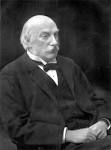
John William Strutt, 3rd Baron Rayleigh |
death John William Strutt, 3rd Baron Rayleigh John William Strutt, 3rd Baron Rayleigh (born 1842), Nobel Prize-winning physicist. |
|
13 Jul 1919
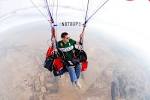
Transatlantic balloon |
Transatlantic balloon In 1919, the first lighter-than-air transatlantic flight was completed. |
|
15 Jul 1919

Emil Fischer |
death Emil Fischer Died 15 Jul 1919 at age 66 (born 9 Oct 1852). German chemist who was awarded the Nobel Prize for Chemistry in 1902 in recognition of his investigations of the sugar and purine groups of substances. He determined the structures of uric acid, xanthine, caffeine, theobromine, and other related compounds, and showed they are all derivatives of a single compound, a nitrogenous base that he named purine. His study of sugars led him to investigate the reactions and substances involved in fermentation, leading to his investigations of how enzymes break down sugars. Thus, Fischer laid the foundations for enzyme chemistry. During WW I Fischer was responsible for organizing the production of chemicals in Germany. He committed suicide in 1919, after two of his sons had been killed in the war. |
|
21 Jul 1919

Gustaf Retzius |
death Gustaf Retzius Gustaf Retzius (born 1842), anatomist. |
|
26 Jul 1919
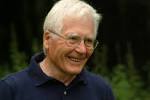
James Lovelock |
birth James Lovelock James Lovelock, English environmentalist and futurologist. |
|
08 Aug 1919
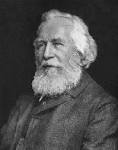
Ernst Haeckel |
death Ernst Haeckel Ernst Haeckel (born 1834), zoologist. |
|
06 Sep 1919

Wilson Greatbatch |
birth Wilson Greatbatch Wilson Greatbatch (died 2011), biomedical engineer. |
|
10 Nov 1919

Mikhail Kalashnikov |
birth Mikhail Kalashnikov Mikhail Kalashnikov (died 2013), Russian small arms designer. |
|
23 Nov 1919

Henry Gantt |
death Henry Gantt Henry Gantt (born 1861), project engineer. |
|
01 Dec 1919
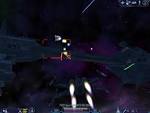
XWA |
XWA (technology) XWA, in Montreal, Quebec, is the first public radio station in North America to broadcast. |
|
29 Dec 1919
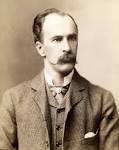
Sir William Osler |
death Sir William Osler Died 29 Dec 1919 at age 70 (born 12 Jul 1849). (Baronet) Canadian physician who revolutionized the medical curriculum in North America, adapting the best of the systems he had observed in England and Germany. He believed that students learn best by doing, teaching medical students at the bedside. He introduced postgraduate training system, instituting a general internship of one year to be followed by a residency of several years. His textbook, The Principles and Practice of Medicine (1892) included the advances of the previous half-century in clinical medical science, and remained the standard text for 40 years. Early in his life, in 1873, he made the most careful description to date of what later were called the "blood-platelets," which was presented to the Royal Society. |
|
29 Dec 1919

William Osler |
death William Osler Sir William Osler (born 1849), physician. |